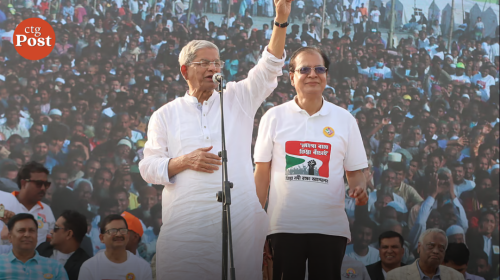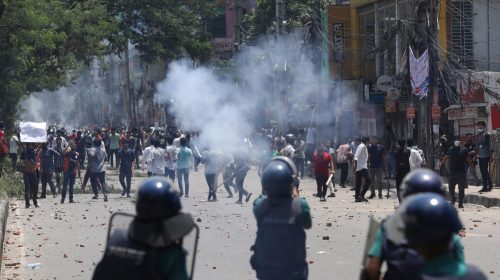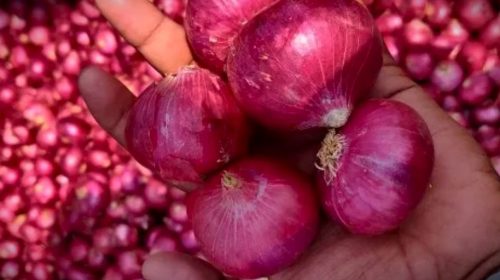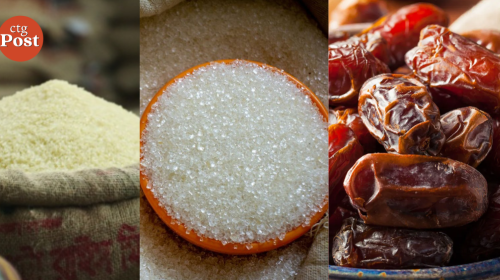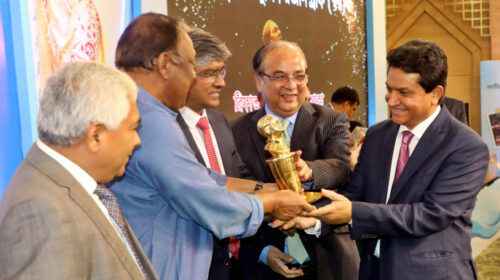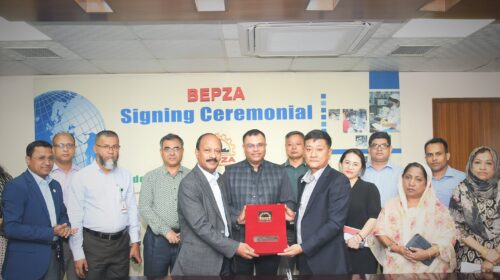Data from the latest Household Income and
Expenditure Survey (HIES) has revealed that household’s income has increased
in the country while poverty and extreme poverty rates have declined
throughout the nation.
The household’s average monthly income has increased in nominal terms to Taka
32,422 in 2022, from Taka 15,988 in 2016 and Taka 11,479 in 2010, according
to the Bangladesh Bureau of Statistics (BBS).
In the final report of HIES 2022 launched today, the BBS made significant
developments by selecting the quality enumerators, conducting residential
training, Introducing CAPI (Computer Assisted Personal Interviewing),
improving data collection tools, substantially increasing the number of food
and non-food items based on COICOP (Classification of Individual Consumption
by Purpose), and implementing continuous monitoring and supervision etc.
This has resulted in an improvement in data tracking and accuracy during the
survey, which has been reflected in the consumption, income and expenditure
aggregates.
The Dissemination Program of the ‘Final Report of Household Income and
Expenditure Survey (HIES) 2022′ was held today at BBS Auditorium in the
capital’s Agargaon area.
Planning Minister MA Mannan addressed the function through video message as
the chief guest.
Dr. Hossain Zillur Rahman, Executive Chairman, PPRC and Chairman, BRAC, Dr.
Shahnaz Arefin ndc, Secretary, Statistics and Informatics Division (SID),
Ministry of Planning and Dr. Md. Kawser Ahmed, Member (Secretary), General
Economics Division (GED) were present as special guests.
Mr. Mohammed Mizanur Rahman, Director General of the Bangladesh Bureau of
Statistics (BBS), chaired the program.
The key findings of the Final Report of the HIES 2022 are as follows:
Household living standards and socio-economic status have improved:
The 2022 data found that household-level access to electricity increased to
99.3% in 2022 from 75.9% in 2016 and 55.3% in 2010. Similarly, 92.3% of
households have access to improved toilet facilities, and 96.1% have access
to improved sources of drinking water.
Notably, Bangladesh’s literacy rate (7 years and over) rose significantly to
74.0% in 2022 from 65.6% in 2016 and 57.9% in 2010.
Household monthly total expenditure has increased:
Monthly total expenditure among households has increased nominally to Taka
31,500 in 2022 from Taka 15,715 in 2016 and Taka 11,200 in 2010.
Poverty declined significantly in 2022:
The headcount rate (HCR) in 2022 using the upper poverty line is 18.7% at the
national level, 20.5% in rural areas, and 14.7% in urban areas. The official
HCR 2016 using the upper poverty line was 24.3% at the national level, 26.4%
in rural areas, and 18.9% in urban areas.
Using the back-calculation method, the HCR of HIES 2016 was 26.5% (upper
poverty line), indicating that poverty declined 78 percentage points (pace of
decrease is 29.43%) in 2022 from 2016 In Bangladesh.
Extreme poverty declined tremendously in 2022:
The headcount rate (HCR) in 2022 using the lower poverty line is 5.6%
nationally, 6.5% in rural areas, and 3.8% in urban areas. The official HCR
2016 using the lower poverty line was 12.9% at the national level, 14.9% in
rural areas, and 76% in urban areas.
It is worth stating, using the back-calculation method, the HCR of HIES 2016
was 9.2% (upper poverty line), which indicates that extreme poverty sharply
declined by 3.6 percentage points (the pace of decreasing is 39.13%) in 2022
from 2106 in Bangladesh.
Consumption pattern has been changing over time:
Non-food expenditures are increasing gradually. The percentage of food
consumption expenditure is 45.8%, and non-food consumption expenditure is
54.2% in 2022, compared to 47.7% for food and 52.3% for non-food in 2016.
The average rice consumption per person per day was 328.9 grams in 2022 which
was 367.2 grams in 2016, 416.0 grams in 2010, 439.6 grams in 2005 and 458.5
grams in 2000. On the other hand, the vegetables and meat consumption have
increased gradually.
Average protein intake has increased:
The average protein intake is 72.5 grams per person per day in 2022 up from
63.8 grams in 2016, 66.26 grams in 2010, 62.52 grams in 2005 and 62.50 grams
in 2000.
Barishal division has the highest headcount rates in 2022:
The headcount rates of the Barishal Division in 2022 are the highest among
eight divisions using both upper and lower poverty lines. The HCR in Barishal
in 2022 is 26.9% using the upper poverty line and 11.8% using the lower.
Meanwhile, among the divisions, Khulan has 14.8%, the lowest | ICR, using the
upper poverty line, and Dhaka has 2.8%, the lowest HCR, using the lower
poverty line.
Income inequality has dispersed in 2022:
The income Gini coefficient is 0.499 at the national level, 0.446 in rural
areas and 0.539 in urban areas in 2022 which were 0.482 at the national
level, 0.454 in rural areas and 0.498 in urban areas in 2016 and 0.458 at the
national level, 0.431 in rural areas and 0.452 in urban areas in 2010 which
indicates that the concentration of income in higher income groups is
gradually increasing.
Households’ financial inclusion is gradually increasing:
In 2022, approximately 14,1% of households had at least one member who opened
a bank account during the last 12 months, which is double the rates in 2016
(7.5%) and 2010 (7.4%). This evolution presents a clear picture of the
gradual improvement toward the financial inclusion of the households.
The coverage of the social security programme (SSP) has increased
significantly in 2022:
The SSP coverage has increased significantly in 2022 compared to 2016 and
2010, concerning households and SSP programme beneficiaries in all areas, eg,
national, rural, and urban areas.
There are 37.6% households and 50.0% SSP beneficiaries recorded in HIES 2022,
whereas the number was 27.8% households and 28.7% SSP beneficiaries,
respectively in 2016. However, the number of SSP programmes covered 66 in
HIES 2022, 37 in 2016 and 30 in 2010.
Female labour force is dominant in the non-agriculture sector in urban areas:
HIES 2022 data suggests that the female (Aged 15+) labour forces are more
engaged in the non agriculture sector in the urban areas than their male
counterparts. Among the females employed in the urban areas, approximately
98.90% are involved in the non-agriculture sector and 1.10% in the
agriculture sector.
Meanwhile, 94.85% of males are involved in the non-agriculture sector and
5.15% in the agriculture sector in urban areas. Moderate or Severe Food
Insecurity is higher in Rural Areas than Urban Areas.






